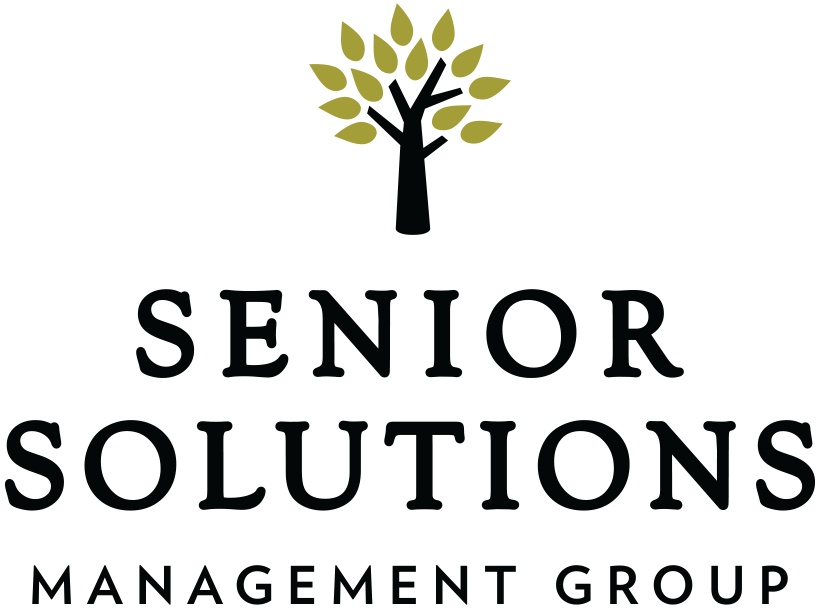
We hear about so many different nutrition tips and diet plans that contradict each other, and it leaves us not knowing what plan or advice to follow. A simple search on the internet can leave you more frustrated and confused than when you first opened the computer to begin your search.
Proper nutrition helps keep us healthy and allows us to maintain our independent, active lifestyles, so following the wrong diet could quickly sabotage this goal. It is crucial to know how your body works and what it needs to function properly.
Senior Solutions Management Group is all about keeping life simple. From our all-inclusive senior living services to our nutrition and dining options, we offer high-quality, simple solutions. We are keeping nutrition simple by exploring how our nutrition needs change as we age and offering a guide to basic senior nutrition.
How Our Nutrition Needs Change as We Age
Needing Fewer Calories with the Same Amount of Nutrients
Daily caloric needs depend on an individual’s activity level, muscle mass, height, and weight. Since older adults tend to participate in less strenuous activities than previous years and have less muscle mass, their bodies do not burn as many calories a day.
However, they still need the same amount of nutrients. This makes it all the more important for individuals to be mindful of the foods they are eating and making sure that they are nutrient-dense.
Benefiting from More Protein
According to an article published in the National Institutes of Health, “after the age of 30, adults lose 3-8% of their muscle mass per decade.” Protein can help individuals maintain their muscle mass and prevent them from losing their strength.
Needing More Calcium and Vitamin D
Calcium and vitamin D are two of the most important nutrients that support bone health. Healthline states, “calcium helps build and maintain healthy bones while vitamin D helps the body absorb calcium.”
Age is one of the major risk factors of osteoporosis because our bodies absorb less calcium from our diets and are less efficient at producing vitamin D, leading to deficiencies of both of these nutrients. This is why aging individuals need to consume more foods that are rich in calcium and vitamin D.
Read our blog, “Dining at Senior Solutions: Nutrition, Community, and Quality."
A Guide to Basic Senior Nutrition
My Plate
What was once presented to us by a pyramid is now in the shape of a plate. In 2011, the USDA switched its approach from the food group pyramid to a diagram of a plate that displays the portions of foods we should be eating from each of the food groups. It is called MyPlate.

Essentially, the diagram recommends half of your daily diet to be vegetables and fruits and the other half to be grains and protein with dairy as a side, but we are going a little deeper.
Vegetables
The MyPlate diagram displays vegetables as the biggest section, meaning that you should eat more vegetables than any other food group. This is because most vegetables are naturally low in calories and fat but are extremely nutrient-dense. Vegetables contain many nutrients and vitamins that are essential to senior nutrition, making them a staple to a healthy, balanced diet.
MyPlate suggests that men and women over the age of 60 should consume 2-3 ½ cups of vegetables per day.
Grains
Grains are the second-largest food group on the MyPlate diagram. This is because “grains provide many nutrients that are vital for the health and maintenance of our bodies.” These nutrients include complex carbohydrates, dietary fiber, minerals, and several B vitamins.
Fruits
As the third biggest section on the food diagram, fruits are naturally low in fat, sodium, and calories and are a good source of essential nutrients our bodies need. For proper senior nutrition, MyPlate suggests men and women over 60 consume 1 ½ to 2 cups of fruit per day.
Meat and Protein
Meat, poultry, seafood, beans, peas, lentils, eggs, nuts, and seeds all fall into the protein section of the MyPlate diagram. It is important to mix up your intake and get a variety of these protein options to ensure you get the different nutrients that each of these protein types provides.
Dairy
Dairy is the smallest section on the plate diagram, but that does not mean it is unimportant. “The dairy group provides many nutrients including calcium, phosphorus, vitamin A, vitamin D…riboflavin, vitamin B12, protein, potassium, zinc, choline, magnesium, and selenium (MyPlate).” It is recommended that older adults consume three cups of dairy per day.
--
There is a lot to learn about nutrition, but if you follow the basics, you are on your way to leading an active, healthy lifestyle. To learn more about what our all-inclusive senior living communities offer, contact a member of the Senior Solutions Management Group team.

